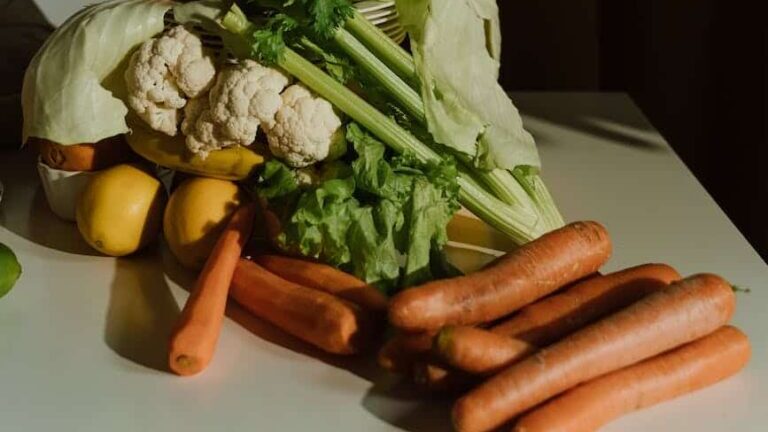

In recent years, gluten-free diets have gained popularity among health-conscious individuals. But what exactly is gluten, and why do so many choose to exclude it from their diets?
Gluten is a naturally occurring protein found in several types of grains, including wheat, barley, and rye. It is responsible for the elastic texture of dough, helping bread and other baked goods rise and maintain their shape. Gluten can also be found in many processed foods, sauces, and beverages.
However, for individuals with certain health conditions, such as celiac disease or gluten intolerance, consuming gluten can lead to a wide range of adverse symptoms. These can include digestive issues, skin problems, and even neurological effects.
A gluten-free diet is essential for individuals diagnosed with celiac disease. This autoimmune disorder triggers an immune response in the small intestine when gluten is consumed. Over time, this reaction can damage the lining of the small intestine, leading to malabsorption of nutrients and various health complications.
People with non-celiac gluten sensitivity or gluten intolerance may also benefit from a gluten-free diet. While these conditions are less severe than celiac disease, they can still cause a variety of uncomfortable symptoms, including bloating, stomach pain, fatigue, and diarrhea.
Aside from these medical conditions, some people choose to follow a gluten-free diet because they believe it contributes to improved health, weight loss, increased energy, or simply a feeling of general well-being.
It’s important to note that a gluten-free diet doesn’t automatically equate to a healthy diet. Just like any other eating plan, it’s crucial to focus on nutrient-dense foods and maintain a balanced diet. In the case of a gluten-free diet, this means incorporating a variety of naturally gluten-free foods, such as fruits, vegetables, lean proteins, and gluten-free grains.
For more information on gluten-free eating, including meal ideas and shopping tips, you can explore our range of articles on topics like gluten-free recipes, gluten-free meal plan, and gluten-free grocery shopping.
Incorporating a variety of vegetables into a gluten-free diet is a crucial strategy for achieving balanced nutrition. This is because vegetables offer a wealth of nutritional benefits and their natural gluten-free status makes them a safe choice for those with gluten sensitivities or celiac disease.
Vegetables are packed with essential nutrients that can help bolster health and well-being. They are low in calories but high in vitamins, minerals, fiber, and antioxidants. Here’s a snapshot of the key nutrients found in common vegetables:
| Vegetable | Key Nutrients |
|---|---|
| Spinach | Vitamin K, Vitamin A, Folate, Iron |
| Broccoli | Vitamin C, Vitamin K, Fiber, Potassium |
| Carrots | Vitamin A, Fiber, Vitamin K |
| Bell Peppers | Vitamin C, Vitamin B6, Folate |
In a gluten-free diet, grains containing gluten are avoided and often replaced with gluten-free alternatives. However, many of these substitutes lack the fiber and essential B vitamins typically found in their gluten-containing counterparts. This is where vegetables come in.
With their high fiber content, vegetables can help compensate for the fiber deficit often associated with a gluten-free diet. Additionally, vegetables such as spinach, peppers, and broccoli are rich sources of B vitamins, helping to fulfill the nutritional needs of those following a gluten-free diet.
Moreover, the inclusion of a variety of gluten-free vegetables can add flavor, color, and texture to gluten-free meals, making the dietary shift more enjoyable and sustainable. Whether used in salads, stir-fries, or as part of gluten-free recipes, vegetables can significantly enhance the enjoyment and nutritional value of gluten-free eating.
In conclusion, vegetables are an indispensable part of a balanced, gluten-free diet. They provide essential nutrients, complement gluten-free meals, and help ensure that nutritional needs are met. So, whether you’re new to the gluten-free lifestyle or a seasoned pro, remember to make vegetables a prominent feature on your plate!
An essential part of maintaining a balanced diet, especially for those following a gluten-free lifestyle, is the inclusion of a wide variety of gluten-free vegetables. This section will provide a comprehensive list of such vegetables and offer guidance on how to identify them.
Most vegetables are naturally gluten-free, making them a safe and nutritious choice for those with gluten intolerance or celiac disease. Below is a list of common vegetables that are gluten-free:
| Gluten-Free Vegetables |
|---|
| Broccoli |
| Spinach |
| Carrots |
| Bell Peppers |
| Asparagus |
| Kale |
| Zucchini |
| Tomatoes |
| Cabbage |
| Artichokes |
| Cucumbers |
| Brussels Sprouts |
| Beets |
| Sweet Potatoes |
| Onions |
| Eggplant |
This is not an exhaustive list, most whole vegetables not processed or mixed with gluten-containing ingredients are safe for those following a gluten-free diet.
Identifying gluten-free vegetables is generally straightforward as most fresh, whole vegetables are naturally free of gluten. However, when it comes to processed or packaged vegetables, extra caution is required.
Some processed vegetables may contain sauces or seasonings that include gluten. Therefore, it’s crucial to read labels carefully. Look for labels that explicitly state the product is gluten-free. If the product doesn’t have a gluten-free label, check the ingredient list for any gluten-containing additives.
Additionally, vegetables used in pre-made meals or dishes at restaurants may not be gluten-free due to cross-contamination or the use of gluten-containing ingredients. When dining out, it’s essential to ask about the preparation methods and ingredients used. Consider our guide on gluten-free restaurants for more information.
Incorporating a wide variety of gluten-free vegetables into your diet can contribute to a balanced, nutrient-rich diet. For more guidance and tasty recipe ideas, explore our collection of gluten-free recipes.
Vegetables are a cornerstone of any healthy diet, and they hold a significant place in gluten-free meal planning. Their versatility leads to a plethora of creative ways to incorporate them into everyday eating routines. In this section, we’ll explore how to prepare gluten-free vegetable dishes and offer tips for cooking gluten-free vegetables.
Vegetables inherently do not contain gluten, making them a safe and nutritious choice for those following a gluten-free diet. When preparing vegetables, it’s essential to avoid cross-contamination with gluten-containing products. For instance, use separate cutting boards and utensils for gluten-free cooking, and ensure all surfaces are clean.
When choosing vegetables, opt for fresh produce whenever possible. While canned and frozen vegetables can be convenient, they may sometimes contain additives or sauces that include gluten. Always read labels carefully.
Several gluten-free dishes can be made using vegetables. Soups, salads, stir-fries, and roasted vegetables are just a few examples. Vegetables can also be used in creative ways, such as making cauliflower rice or using zucchini to make gluten-free pasta. For more ideas, check our collection of gluten-free recipes.
Cooking gluten-free vegetables is not much different from cooking regular vegetables. However, a few tips can help you maintain the nutritional value and enhance the flavor of your vegetables:
Minimal Processing: Try to keep the vegetables in their natural form as much as possible. Over-processing can lead to loss of nutrients.
Cooking Methods: Opt for cooking methods that do not require the addition of flour or other gluten-containing ingredients. Steaming, grilling, roasting, and sautéing are excellent methods for cooking vegetables.
Use of Herbs and Spices: Enhance the flavor of your vegetables with gluten-free herbs and spices. Be cautious of spice blends, as they might contain gluten.
Homemade Sauces and Dressings: Prepare your own sauces and dressings to ensure they are gluten-free. You can find some ideas in our article on gluten-free sauces and gluten-free dressings.
With these tips and a little creativity, you can create delicious and nutritious meals featuring gluten-free vegetables. Whether you’re new to the gluten-free lifestyle or an experienced cook, vegetables offer endless possibilities for maintaining a diverse and appetizing diet.
Incorporating gluten-free vegetables into your diet can bring about numerous health benefits. These vegetables not only serve as a safe food source for those with gluten intolerance or celiac disease, but they also offer benefits that can enhance digestion, assist in weight management, and contribute to long-term health.
Vegetables are an excellent source of dietary fiber, which plays a vital role in supporting digestive health. Consuming a diet rich in gluten-free vegetables can help maintain a healthy digestive system, prevent constipation, and reduce the risk of various digestive issues.
Adding more gluten-free vegetables to your diet means you’re also adding more fiber, which can promote regular bowel movements and support overall gut health. Furthermore, the natural enzymes found in many vegetables can aid in breaking down food, making it easier for your body to absorb the nutrients it needs.
Gluten-free vegetables can be an essential part of a weight management plan. They are generally low in calories and high in fiber, which can help you feel full and satisfied without consuming a large number of calories. This can help control overeating and assist in maintaining a healthy weight.
Incorporating a variety of gluten-free vegetables into your gluten-free meal plan can help create balanced meals that are not only nutritious but also satisfying and flavorful.
Beyond digestive health and weight management, gluten-free vegetables can contribute to long-term health benefits. They are packed with vitamins, minerals, and antioxidants that can strengthen the immune system, lower the risk of chronic diseases, and promote overall wellness.
Regular consumption of vegetables can contribute to heart health, improved vision, and stronger bones. Antioxidants present in vegetables can combat free radicals, reducing the risk of chronic diseases like heart disease and certain types of cancer.
Furthermore, a diet high in gluten-free vegetables can help regulate blood sugar levels, making it a suitable dietary choice for those managing diabetes.
In conclusion, incorporating gluten-free vegetables into your diet can offer numerous health benefits, from improved digestion and weight management to long-term wellness. Whether you’re following a gluten-free diet due to celiac disease, gluten intolerance, or personal preference, these benefits highlight the importance of including a variety of vegetables in your daily diet. For more advice on living a gluten-free lifestyle, explore our articles on gluten-free foods and gluten-free recipes.
